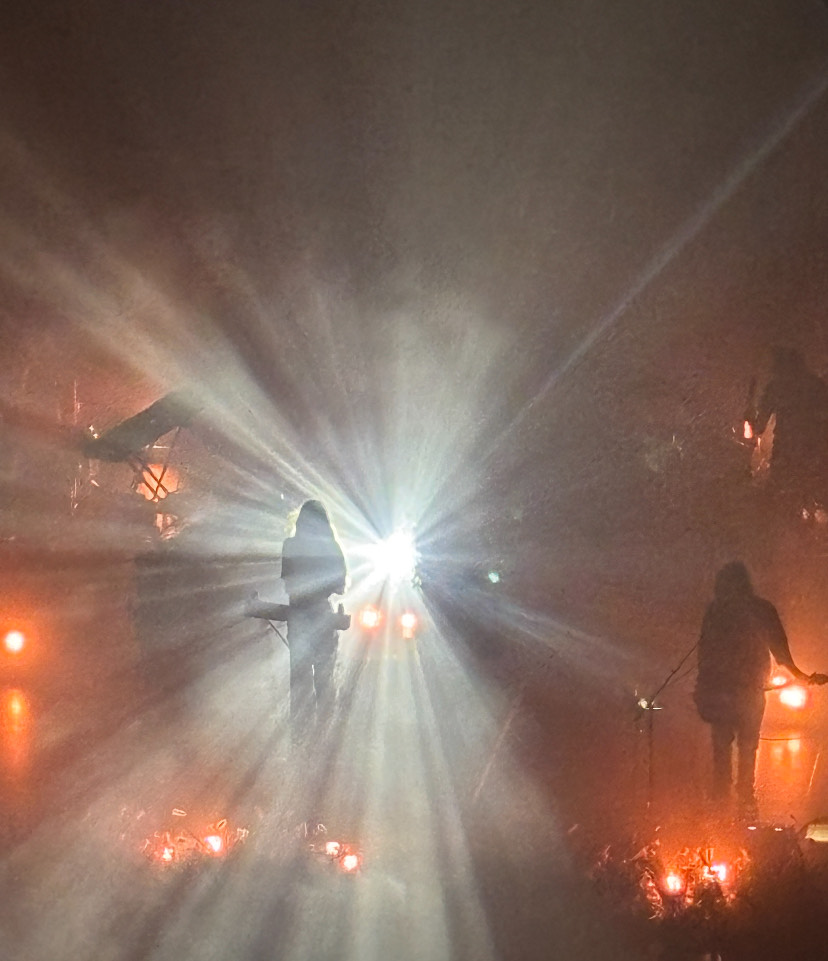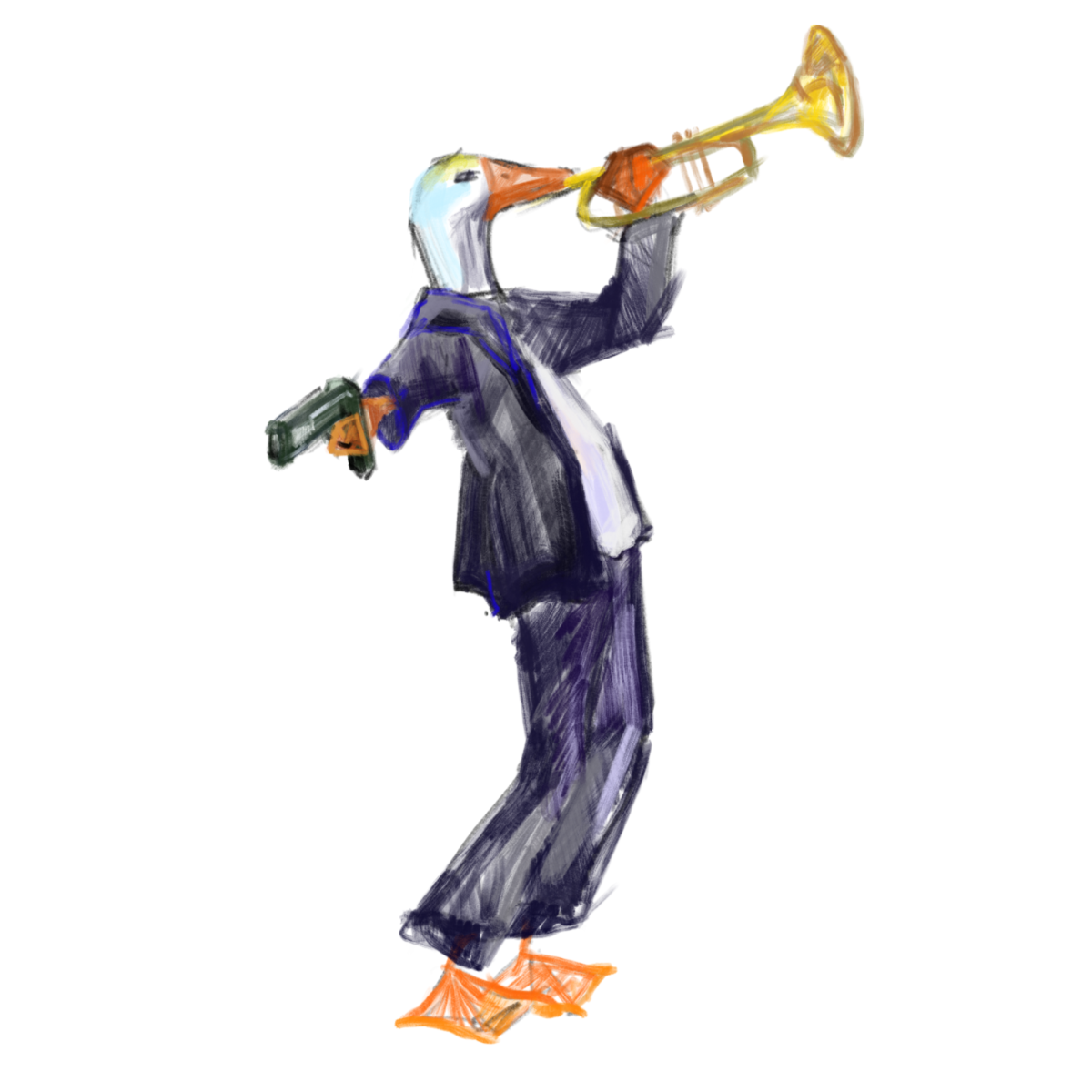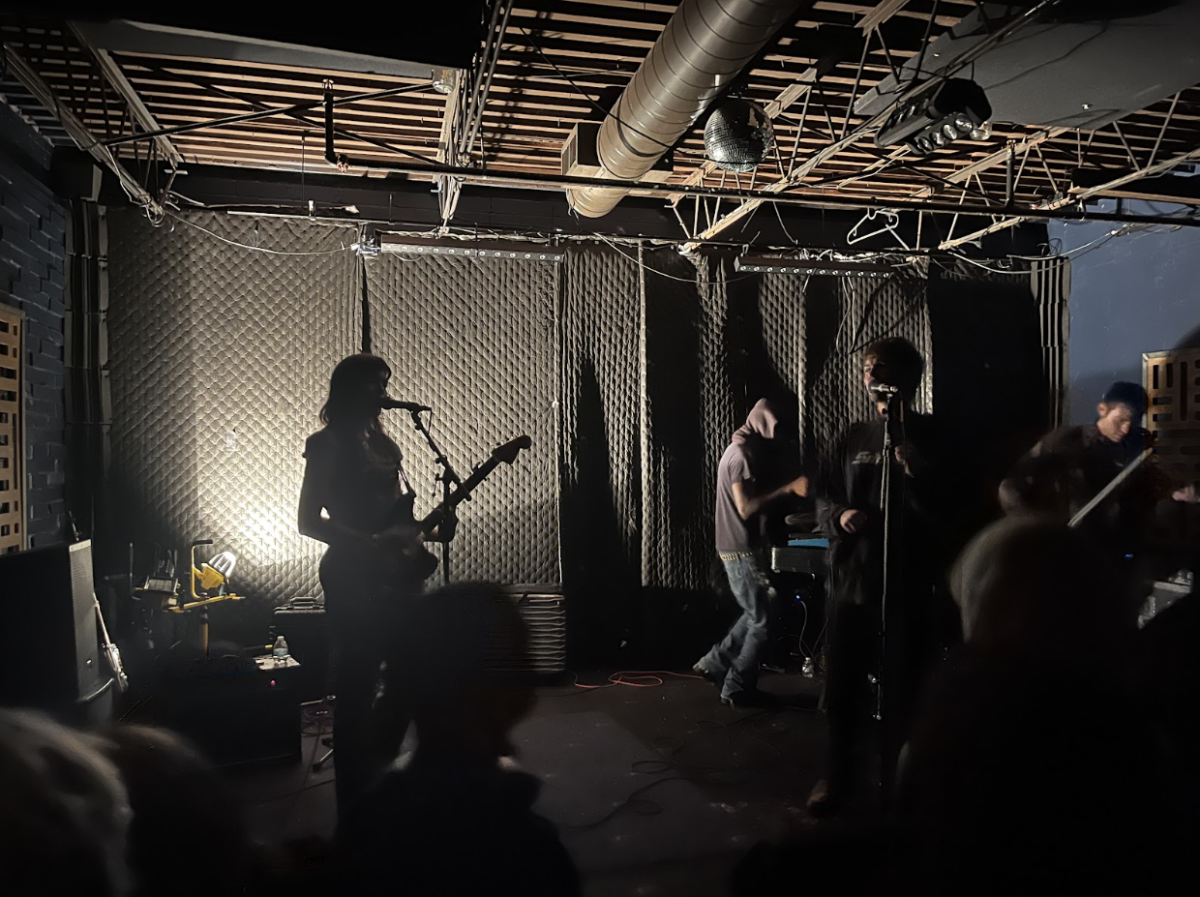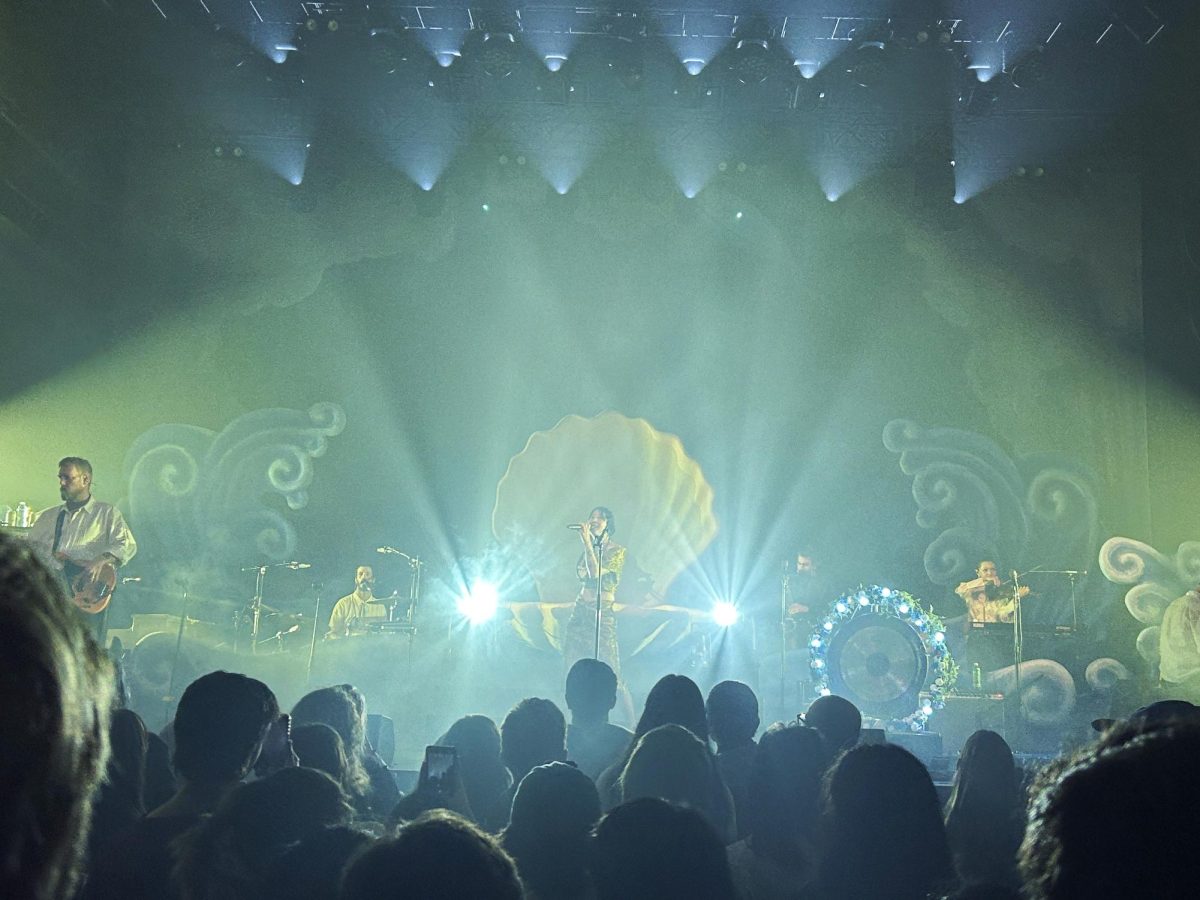Among the excited crowd, the dim blue mixes with the red spotlight, creating a colorful palette that slowly shatters on the stage. Girls with different animal onesies appear; the crowd chuckles. They dance to the music, and start taking off their hoods, their onesies and their underwear until the only cover remaining is black tape on their nipples, thongs, and striped knee-socks. The audience cheers as the dancers touch their breasts, spread their legs, roll around on the stage and make out with each other.
The original definition of “burlesque” differs from its perception today. Columbia Electronic Encyclopedia defines burlesque as a “form of entertainment differing from comedy or farce in that it achieves its effects through caricature, ridicule, and distortion.” Since its first popularization in the 17th century, burlesque has gone through a long evolution in both form and content. As Clyde explained in his book “Horrible Prettiness: Burlesque And American Culture,” “what is today remembered as burlesque—the stripper, the runway, the candy butcher—are features that did not appear until the 1920s, nearly a half century after burlesque’s emergence as a distinct American entertainment form.”
Blackheart Burlesque is a performance done by a group called SuicideGirls (SG), which is a community based on a pin-up girl soft porn website where members post pictures of their bodies and exchange comments. It was founded in 2001 and has grown to have around 3,000 members. I got a chance to speak with Selena Mooney (Missy Suicide), a cofounder of SG. She said that the website has “members all over the world, female as well as male.” According to Mooney, the website was founded in order to “appreciate girls who don’t fit into the cookie cutter mold heralded by the media.” Because of their motto of celebrating alternative beauty, SG has been heralded by several media outlets as a feminist group.
“Each photo [of the members] showcases how each woman feels sexy” and manifests how “confident they are with their bodies,” Mooney said. Blackheart Burlesque is an attempt by SG to increase their visibility and to promote the website by incorporating popular dance performance.
The performance featured six dancers, who all slathered hypersexualized movements on the stage: grabbing breasts, sticking buttocks out, rolling over the floor, twerking and mimicking sexual interaction. The same repertoire repeated over and over again, in which clothed girls appear on stage, take off their clothes one by one, dance with hypersexualized gestures and disappear backstage only to repeat the same routine in a few minutes. Such repetition made the performance predictable and boring as the show progressed, ultimately degrading the quality of the performance as entertainment.
Six to seven minutes of short scenes constituted the entire performance. Each scene featured different themes that are inspired from popular culture. For example, a girl in short plaid skirt and tight blouse played the role of Hermione Granger. A girl in blue thong and red cape played Superwoman. A Japanese-style school girl theme frequently appeared, with a short uniform skirt, tie, knee socks and a tight blazer: apparently a play with preexisting fetishization of females, mainly East Asian women.
Blackheart Burlesque provokes a historically controversial relationship between striptease and feminism. Can striptease be feminist? Does it have a potential to empower women? Many traditions of feminist burlesque scream yes to this question. Dita Von Teese, a so-called American queen of burlesque, is famous for desexualizing the female body through choreography. Liam Mullone, a comedian and an author of “The Spectator,” attended her burlesque and described that “the armour of familiarity—boredom, even—is so thick that none of the women [seem] to exist in the moment of disrobing, and so trying to enjoy their nakedness [is] like trying to enjoy aircraft food.” The theory behind the performance was to make objectification impossible by showing how objectified women were. Their purpose was to deliver a message, to revolutionize the prevalent objectification of female body as sexual object and to reverse the voyeuristic gaze.
Does Blackheart Burlesque align with such traditional practices of feminist burlesque? Overwhelming aspects of the performance argue otherwise. From the beginning, the show host makes it clear that the night is about consuming the dancers’ sexuality. “Are you guys excited to see the girls shaking their fucking ass off?” As she asks, the crowd screams a passionate “yes” in response.
Some of the themes showcased explicitly BDSM performances. Four dancers are blindfolded and handcuffed, while another girl has a whip in order to sexually harass the other four and exploit their bodies. The abusive nature of the situation transformed into an erotic play and silenced the crowd. As the dominant master pretends to whip them, the blindfolded girls roll over the ground and obey by showing their breasts and kissing her. As the show reaches its finale, all the slaves and the master intermingle together as if they cannot live without touching each other. The light dims and the dancers disappear into the dark. A moment of silence, and the crowd bursts into rapturous applause.
Such performances are definitely counterintuitive to the feminist burlesque that has been practiced before. Rather than trying to desexualize the female body, SG dancers incorporate hypersexualized choreography and romanticization of sexual assault in order to dramatize the erotic bodies of the dancers. Many times, it seemed like dancers were trying too hard to be sexy without achieving their goal.
Essentially, the core of Blackheart Burlesque is to promote their for-profit website and to gain more members. While it is false that feminist practice should refrain from seeking profits, it seems clear that SuicideGirls puts financial success before a critical approach in how women are represented on stage. The show host repeatedly says: “Do you know why you should join SuicideGirls? Because our titties are there. And all the other asses. You can see us butt naked every day.” The show definitely presented some faulty features: dissonant dances, abusive relationships, fetishization of female body… the list goes on.
The show would be enjoyable to those who, as the MC explains, “just wanna see tits bouncing up and down the stage” without having to think about the complex dynamic between female objectification and their bodily autonomy. If you are the kind of person who is troubled by blatantly sexually abusive content, Blackheart Burlesque would not be a good choice for you. Regardless, the culture of burlesque, as a progenitor of modern pornography, becomes a forum where the question “what does it mean to be a woman?” is constantly being asked and answered.








Gabrielle Wright • Sep 10, 2019 at 8:11 pm
These days of austerity and relative anxiety about having debt, lots of people balk about the idea of making use of a credit card in order to make purchase of merchandise or even pay for a trip, preferring, instead to rely on a tried plus trusted means of making settlement – cash. However, if you possess the cash on hand to make the purchase entirely, then, paradoxically, this is the best time for you to use the card for several good reasons.
Andrew Wilson • Sep 7, 2019 at 7:53 pm
Yet another thing is that when you are evaluating a good on the net electronics retail outlet, look for online stores that are constantly updated, preserving up-to-date with the latest products, the most effective deals, along with helpful information on services. This will make certain you are doing business with a shop that really stays over the competition and offers you what you need to make intelligent, well-informed electronics purchases. Thanks for the significant tips I’ve learned through your blog.